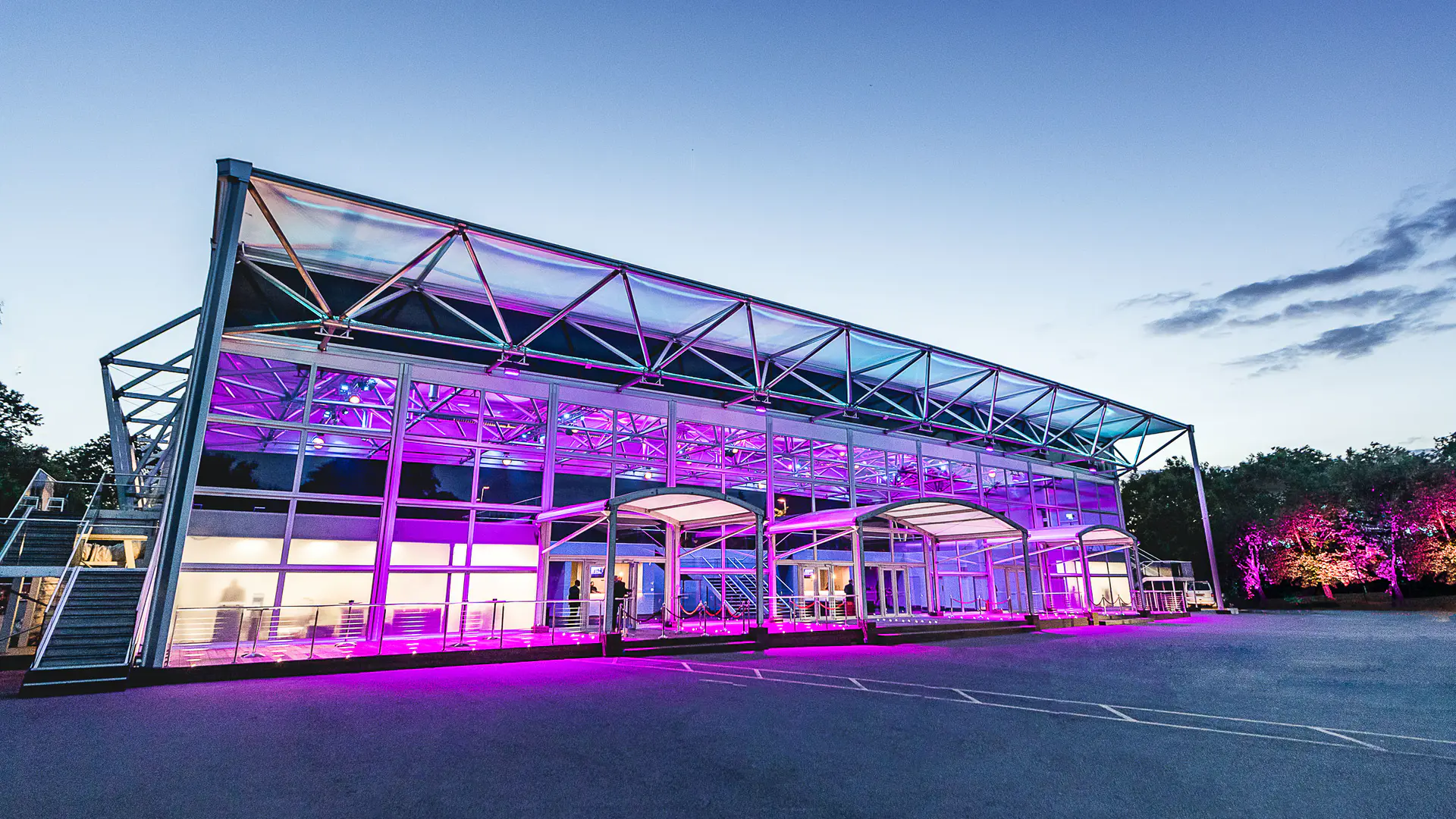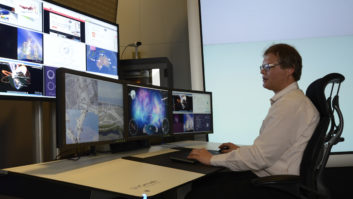 AV has a long history, starting from the earliest vacuum-tube driven systems of the 1920s to modern digital systems with thousands of endpoints. There have been countless changes to devices that capture, reproduce, record and manipulate audio and video, along with changes to the means of transport and distribution.
AV has a long history, starting from the earliest vacuum-tube driven systems of the 1920s to modern digital systems with thousands of endpoints. There have been countless changes to devices that capture, reproduce, record and manipulate audio and video, along with changes to the means of transport and distribution.
Early systems typically had few channels of content, and distribution was limited to the short distances allowed by analog physics. While AV evolved tremendously in the latter half of the 20th century, the conception of an ‘AV system’ remained limited by what was reasonable with analog technology. Large runs of multi-channel audio required massive amounts of copper and were still limited to a relatively short range. Splitting channels to address multiple endpoints was still a nightmare of ground loops, noise, and signal degradation. The reality of analog meant that systems needed to be rigid and inflexible to avoid problems, and changes were going to be costly.
Digital transition
The initial transition to digital changed elements of signal quality, but retained the ‘point-to-point’ thinking of analog, which meant that systems were just as inflexible as before. The real breakthrough in practical digital AV came in the form of networking, or AV-over-IP. For the first time, AV systems were not limited by a wiring diagram or cabling decisions made years before. Instead, operators could freely connect sources and destinations in nearly any combination without moving a single wire, with no concern about noise, hum or interference. The necessary rigidity of earlier systems gave way to flexibility and new ways of thinking about AV.
To date, most AV-over-IP installations are centered around audio (Audio over IP, or AoIP). Modern gigabit computer networks are ideal platforms for digital audio transport, capable of handling many hundreds of channels per device with performance that puts analog systems
to shame. As a result, the marketplace supports thousands of interoperable
AoIP products that work over standard,
off-the-shelf networking gear.
Quantum leap
AoIP represents a quantum leap for audio systems. In most systems, networking is far less expensive to purchase and install than any analog equivalent. A single, lightweight Ethernet cable handles hundreds of audio channels going to any number of devices, plus all control data, with ease. Because all signal routing is handled in software, there is no longer any need for device-to-device connections that limit choices down the road.
Because AoIP can handle so many channels of uncompressed audio, the creation of expansive projects moves from fantasy to reality. Audio routes can be as granular as desired, and hundreds
of active endpoints can be used to create nearly any distribution setup imaginable. Most Audio over IP products are completely interoperable, making discovery and system configuration easy without the need for deep network knowledge.
The vast majority of AoIP devices on the market today employ the same robust platform built upon networking standards and are 100 percent compatible with one another. Devices are automatically discovered and displayed for connection within seconds of being plugged in. No need to worry about special connectors or impedance mismatches – it simply works.
The management of and security of legacy analog systems was essentially governed by physical access: if one could get to the system, one could use the system. Management often relied upon equipment failure in order to know that a piece of equipment was ailing. This meant increased downtime, labour costs, and the need for specialists at every turn.
AoIP systems use the same tools employed by IT managers to secure and monitor devices. Users can be granted access via login, while unauthorised access is simply denied. Management software allows administrators to ‘see’ the entire system at a glance, and to track problems to specific pieces of equipment or people. This in turn allows more complex systems to be operated and maintained worry-free.
Video evolution
Thus far, I’ve only discussed AoIP. In the context of gigabit networking, AoIP is a mature technology that achieves the highest possible levels of performance and scale today with commonly available gear. Video, meanwhile, is a somewhat different story that is rapidly evolving.
A typical gigabit connection is sufficient to transport up to 512 bidirectional channels of uncompressed audio sampled at 48 kHz with 24-bit depth. A single uncompressed HD (1080p) video stream requires approximately 3 Gbps, while higher definition signals with attributes such as 4K and HDR require even more bandwidth – as much as 18 Gbps for single stream when uncompressed. It is thus immediately apparent that a compression method (codec) must be used if commonly deployed 1 Gbps networks are to be used.
Compression is extremely common in video applications of all sorts due to the huge amounts of data that need to be moved. It is used in virtually every video application including all streaming services, in production work in broadcast, and when showing movies in theatres. These applications demonstrate the extremely high quality available with modern codecs.
Video compression
Unlike uncompressed audio, which requires no decoding, compressed video demands that both transmitter and receiver use the same codec in order to work. This means systems must be put together carefully in order to ensure interoperability. Vendors of AV-over-IP technologies are building out solutions that use coherent codecs for exactly this purpose, enabling the same ease of use that audio professionals have enjoyed for years with AoIP and allowing complete audio-video systems to be deployed over standard networking gear.
With video in the mix, choosing the right platform for your AV-over-IP designs is more critical than ever. By using a coherent, well thought-through solution, headaches and costs are each greatly reduced. But that platform must encompass and support all the equipment and use cases envisioned for design now and in the future.
Openly available
At present, there are manufacturers making equipment that is only interoperable with other products from the same maker, and there are others choosing to use solutions that are openly available to all manufacturers. The best choice will depend on the range of options offered, and is of course dependent upon the amount of change anticipated in the years ahead.
An AV-over-IP solution that is available to all OEMs provides the greatest range of brands and product types while ensuring essential interoperability. As that solution is widely adopted, workflows and new designs are based upon a reliable and well-known set of known connection capabilities, as has occurred in the AoIP market.
Easy configuration
Installations based around IP networking are generally easier to configure than those employing analog connectivity. The amount of cabling required is vastly reduced, and all functionality is carried over common, inexpensive infrastructure. Adding additional endpoints or control stations is far easier and cost-effective, as any device type can be connected to any network port.
End-users of installations will appreciate the direct integration of computers and computing devices into AV-over-IP systems. The recording, presentation and production of AV material is made far easier with the ability of computers to interface directly with IP networks using native Ethernet connectivity. These are opportunities that integrators will not wish to miss.
Explosive growth
AV-over-IP is experiencing explosive growth as the de facto professional standard in broadcast, live sound, recording studios, conference spaces, public safety systems, and residential installations. This growth is a result of years of work developing solutions that fit the needs of both manufacturers
and users among hundreds of manufacturers.
Part of that work means providing training and information for anyone interested in learning how AV works with IP networking, and developing products that automate key requirements to ensure high reliability and easy setup.
For integrators, the best path forward is to partner with manufacturers who are not only developing these solutions, but offering the training and support surrounding them.







